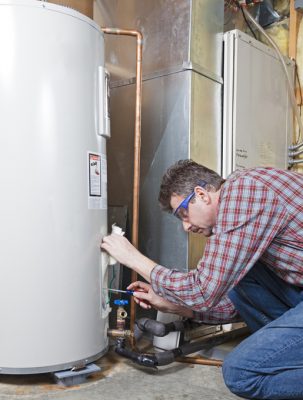Effective Ways to Maintain Your Home's Hot Water System EffectivelyHow to Care for Your Home's Hot Water System Effectively
Effective Ways to Maintain Your Home's Hot Water System EffectivelyHow to Care for Your Home's Hot Water System Effectively
Blog Article
Do you find yourself interested in guidance on Tips For Maintaining Your Hot Water Heater?

Hot water is necessary for day-to-day comfort, whether it's for a rejuvenating shower or cleaning dishes. To guarantee your warm water system runs efficiently and lasts longer, normal maintenance is essential. This write-up provides functional pointers and insights on exactly how to keep your home's warm water system to prevent disruptions and expensive fixings.
Introduction
Maintaining your home's warm water system could appear challenging, but with a few basic actions, you can ensure it operates smoothly for several years to find. This guide covers everything from understanding your hot water system to DIY maintenance ideas and recognizing when to call in professional assistance.
Value of Keeping Your Warm Water System
Routine upkeep not just expands the life-span of your hot water system but additionally guarantees it runs efficiently. Neglecting maintenance can result in reduced efficiency, higher energy bills, and even early failing of the system.
Indicators Your Warm Water System Demands Upkeep
Recognizing when your warm water system requires focus can protect against significant concerns. Watch out for indications such as inconsistent water temperature, strange noises from the heater, or corroded water.
Purging the Hot Water Heater
Purging your hot water heater eliminates sediment buildup, improving efficiency and lengthening its life.
Monitoring and Changing Anode Rods
Anode poles avoid corrosion inside the tank. Inspecting and changing them when broken is vital.
Complicated Problems Requiring Professional Aid
Instances include major leakages, electric issues, or if your water heater is consistently underperforming.
Regular Expert Upkeep Perks
Specialist upkeep can consist of complete assessments, tune-ups, and making sure conformity with safety standards.
Inspecting and Readjusting Temperature Level Setups
Changing the temperature level settings guarantees optimal performance and safety and security.
Do It Yourself Tips for Upkeep
You can carry out several maintenance jobs on your own to maintain your hot water system in top problem.
Looking for Leakages
Frequently examine pipes and links for leakages, as these can result in water damage and greater costs.
Comprehending Your Hot Water System
Before diving right into maintenance tasks, it's helpful to recognize the fundamental components of your warm water system. Normally, this consists of the water heater itself, pipelines, anode rods, and temperature controls.
Month-to-month Upkeep Tasks
Regular month-to-month checks can assist catch small issues prior to they intensify.
Evaluating Pressure Alleviation Valves
Evaluating the stress safety valve ensures it operates correctly and protects against too much pressure buildup.
Shielding Pipes
Shielding hot water pipelines minimizes warmth loss and can save energy.
When to Call a Specialist
While do it yourself upkeep is advantageous, some concerns need specialist knowledge.
Verdict
Routine upkeep of your home's hot water system is crucial for effectiveness, durability, and cost financial savings. By adhering to these suggestions and understanding when to look for professional assistance, you can make sure a reliable supply of hot water without unforeseen disturbances.
How to Maintain an Instant Hot Water Heater
Before tinkering with your hot water heater, make sure that it’s not powered on. You also have to turn off the main circuit breaker and shut off the main gas line to prevent accidents. Also turn off the water valves connected to your unit to prevent water from flowing into and out of the appliance. 2. When you’re done, you have to detach the purge valves’ caps. These look like the letter “T” and are situated on either side of the water valves. Doing so will release any pressure that has accumulated inside the valves while at the same time avoid hot water from shooting out and burning your skin. 3. When the purge valves’ caps are removed, you have to connect your hosing lines to the valves. Your unit should have come with three hoses but if it didn’t, you can purchase these things from any hardware or home repair shops. You can also get them from retail stores that sell water heating systems. Read the user’s manual and follow it to complete this task properly. When the hosing lines are connected, open the purge port’s valves. 4. You should never use harsh chemical cleaners or solutions when cleaning your unit. Make use of white vinegar instead. It should be undiluted and you’ll probably use about 2 gallons. 5. Now flush your water heater. This task should probably take about 40 minutes. We can’t give you specific directions for this because the procedure is carried out depending on the type, model and brand of your heater. With that being said, refer to the user’s manual. 6. When you’re done draining the unit, you have to turn off the purge port valves again. Remove the hosing lines that you earlier installed on each of the water valves. Put the valve caps (purge port) back in their respective places and be very careful so as not to damage the rubber discs that are found inside these caps. 7. Now that everything’s back in place, check your user’s manual again to find out how to reactivate your water heating system. 8. Once it is working, turn one of your hot water faucets on just to let air pass through the heater’s water supply pipes. Leave the tap on until water flows smoothly out of it. https://www.orrplumbing.com/blog/2014/september/how-to-maintain-an-instant-hot-water-heater/

We had been brought to that editorial about Tips on Maintaining a Water Heater through a good friend on a different web property. If you enjoyed our blog post if you please remember to pass it around. Thanks a lot for taking the time to read it.
This Page Report this page